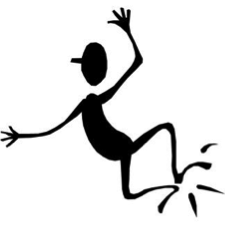
In our previous installments on bad visuals, we talked about the perils of bad stock photos and nonsensical infographics. Now we’re focusing on a specific type of graphic — clip art.
Remember these guys?



These little cartoons used to be on everything from government websites to diner menus. And though clip art is less popular now, we still see it in professional PowerPoints and health materials from time to time.
We know it’s free and convenient, but there are 2 main problems with clip art:
- It makes your materials look dated and unprofessional
- It rarely enhances content and may distract from your main message
And as you know, dear readers, a key principle of health literacy is to only use images that support your message or make it easier to understand.
So what to do instead? Use a stock photo that shows what you’re writing about. Or go with simple icons, like the ones available at the Noun Project — many of which are free!
In 2014, Microsoft finally said farewell to its massive library of clip art. Let’s all take the hint and give our health information the modern look it deserves.
The bottom line: Clip art rarely helps communicate your health messages and might make your readers think the information is dated or unprofessional.
Browse recent posts